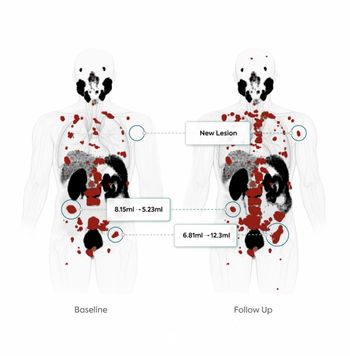
Low Risk Ankle Rule Reduces Pediatric Ankle X-Rays
Ankle radiographs performed on children presenting with acute ankle injuries dropped by almost 22 percent in emergency rooms that implemented the Low Risk Ankle Rule.
Implementation of the Low Risk Ankle Rule for children presenting to emergency rooms with ankle injuries significantly reduces unnecessary radiographs, according to a study published in the
While radiography is used among 85 percent to 95 percent of children who present with ankle injuries, only 12 percent of images show fractures. “Radiography is unnecessary for most children’s ankle injuries,” lead author Kathy Boutis, MD MSc, said in a release. “And these high rates of radiography needlessly expose children to radiation and are a questionable use of resources. Boutis is a pediatric emergency department physician at the Hospital for Sick Children (Sick Kids) and the University of Toronto.
Canadian researchers undertook a study of a phased implementation of the Low Risk Ankle Rule, a validated clinical decision rule regarding indications for ankle radiographs in children with acute blunt ankle trauma, to see if the number of X-rays could be decreased without affecting patient outcome.
The three-phase study involved 2,151 patients, aged 3 to 16, at three intervention sites (1,055 children) and three control sites (1,096 children). The study took place between January 1, 2009, and August 31, 2011; each phase covered 26 weeks.
During phase 1, no interventions were implemented and emergency rooms proceeded as usual. In phase 2, the researchers activated strategies to implement the ankle rule (physician education, reminders, and computerized decision support system) at the intervention sites. Phase 3 included only the decision support system. No interventions were introduced at the three pair-matched control sites.
The baseline frequency of ankle radiography, determined during phase 1, was 96.5 percent at the intervention sites and 90.2 percent at the control sites. During phase 2, the frequency of ankle radiography decreased significantly at intervention sites relative to control sites by 21.9 percent. This was sustained in phase 3. The sensitivity of the Low Risk Ankle Rule during implementation was 100 percent and specificity was 53.1 percent. There was no decrease in satisfaction for patients or physicians.
The researchers did write that their findings “did not achieve the full potential reduction in radiography reported in validation studies,” however they felt that their results were consistent with other studies evaluating clinical prediction rules in emergency departments. They concluded that using the Low Risk Ankle Rule resulted in a significant decrease in radiography use without missing fractures or patient or clinician dissatisfaction.
Newsletter
Stay at the forefront of radiology with the Diagnostic Imaging newsletter, delivering the latest news, clinical insights, and imaging advancements for today’s radiologists.




























